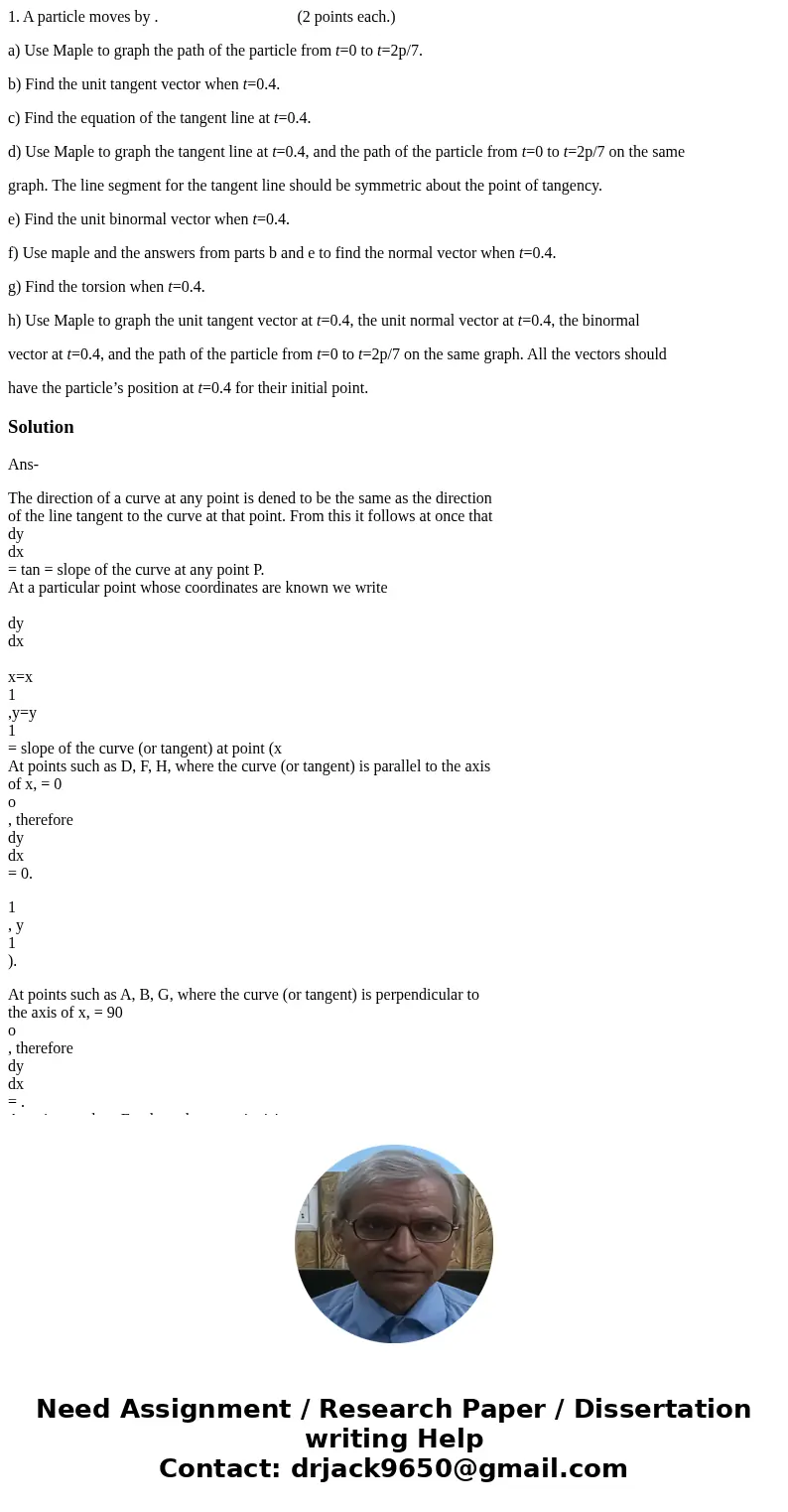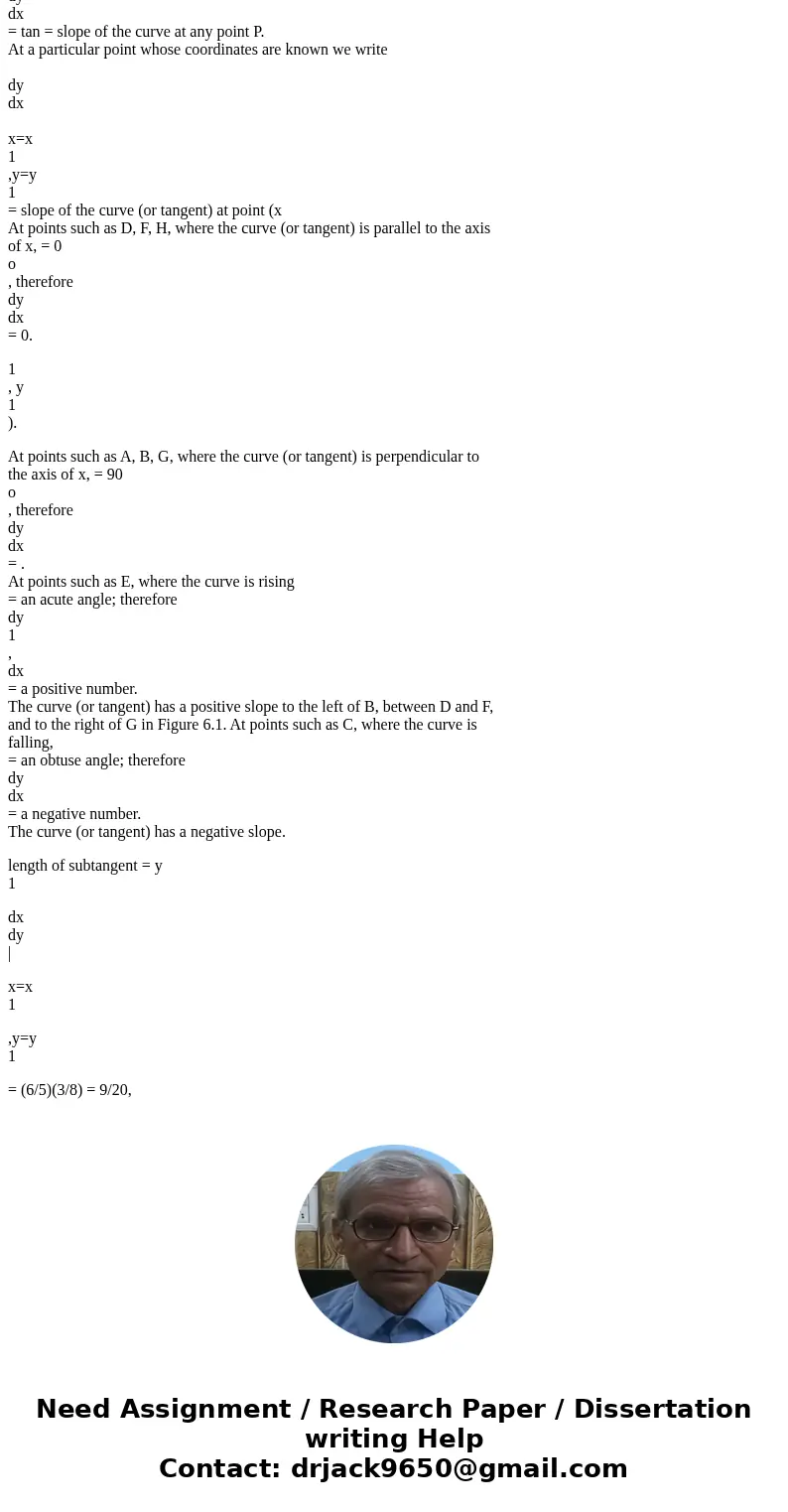1 A particle moves by 2 points each a Use Maple to graph th
1. A particle moves by . (2 points each.)
a) Use Maple to graph the path of the particle from t=0 to t=2p/7.
b) Find the unit tangent vector when t=0.4.
c) Find the equation of the tangent line at t=0.4.
d) Use Maple to graph the tangent line at t=0.4, and the path of the particle from t=0 to t=2p/7 on the same
graph. The line segment for the tangent line should be symmetric about the point of tangency.
e) Find the unit binormal vector when t=0.4.
f) Use maple and the answers from parts b and e to find the normal vector when t=0.4.
g) Find the torsion when t=0.4.
h) Use Maple to graph the unit tangent vector at t=0.4, the unit normal vector at t=0.4, the binormal
vector at t=0.4, and the path of the particle from t=0 to t=2p/7 on the same graph. All the vectors should
have the particle’s position at t=0.4 for their initial point.
Solution
Ans-
The direction of a curve at any point is dened to be the same as the direction
of the line tangent to the curve at that point. From this it follows at once that
dy
dx
= tan = slope of the curve at any point P.
At a particular point whose coordinates are known we write
dy
dx
x=x
1
,y=y
1
= slope of the curve (or tangent) at point (x
At points such as D, F, H, where the curve (or tangent) is parallel to the axis
of x, = 0
o
, therefore
dy
dx
= 0.
1
, y
1
).
At points such as A, B, G, where the curve (or tangent) is perpendicular to
the axis of x, = 90
o
, therefore
dy
dx
= .
At points such as E, where the curve is rising
= an acute angle; therefore
dy
1
,
dx
= a positive number.
The curve (or tangent) has a positive slope to the left of B, between D and F,
and to the right of G in Figure 6.1. At points such as C, where the curve is
falling,
= an obtuse angle; therefore
dy
dx
= a negative number.
The curve (or tangent) has a negative slope.
length of subtangent = y
1
dx
dy
|
x=x
1
,y=y
1
= (6/5)(3/8) = 9/20,


 Homework Sourse
Homework Sourse